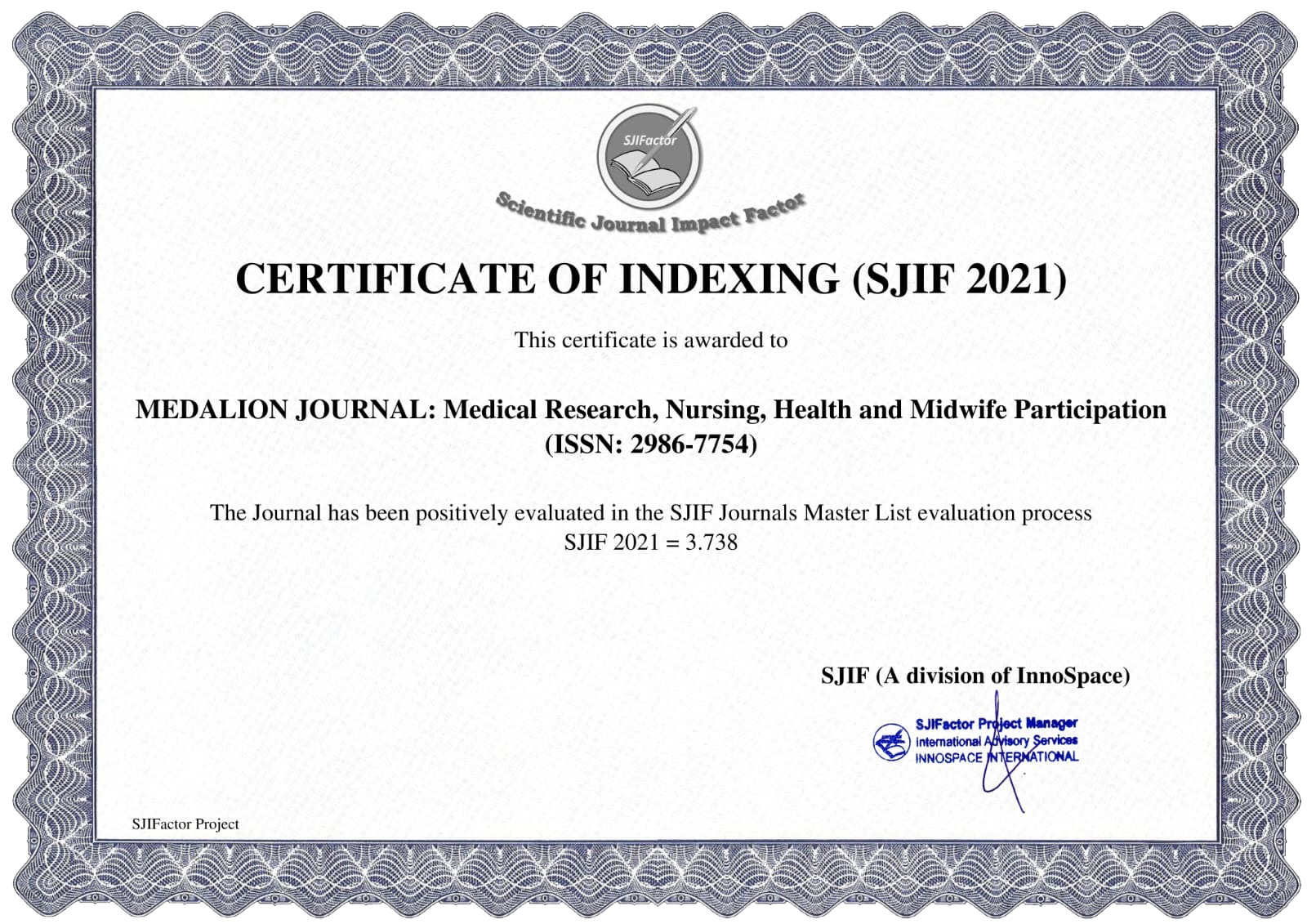STUDY OF PRESCRIPTION PROFILE OF PATIENTS WITH BRONCHIAL ASTHMA AT PARSOBURAN COMMUNITY HEALTH CITY PEMATANGSIANTAR PERIOD JANUARY-MARCH 2017
Main Article Content
Yulia Delfahedah
Arsiaty
Bronchial asthma has varying incidence rates in different countries, but there is a tendency for this disease to increase in number, even though asthma medications have been developed. This study aims to determine the pattern of treatment of bronchial asthma in patients at the Parsoburan Health Center, Pematangsiantar City for the period January-March 2017. This research was a non-experimental (observational) descriptive study conducted using a retrospective method. The data used are medical records of bronchial asthma patients. The results of the study showed that in the January-March 2017 period there were 18 cases of bronchial asthma. The gender distribution of bronchial asthma patients was 66.7% male and 33.3% female, while the age distribution of bronchial asthma patients was divided into 4 groups, namely, Toddlers (0≤5 years) by 33.3%, children (5<n<12 years) by 5.6%, adults (12<n<65 years) by 38.9%, and elderly (> 65 years) of 22.2% The general description of prescribing the highest number of drugs given to bronchial asthma patients in one prescription are 5 and 6 drugs each of 38.9%, the distribution of drug classes used for therapy includes, bronchodilators 25, 7%, mucolytic 18.5%, corticosteroid 15.5%, anti-microbial 15.5%, anti-hypoxemia 4.1%, analgesic 6.2%, anti-histamine 3.1% and accompanying drugs (anti- diabetic, anti-epileptic, anti-hypertensive, anti-angina, and vitamins) given at 1% each. Distribution of discrepancies in drug administration based on the Indonesian National Drug Informatorium standard of 17.5%, based on the Physicians Drug Handbook standard of 0%,
Anonymous, 2004, Indonesian Pharmacist Competency Standards, 14-15, ISFI, Jakarta
Anonymous, 2000, Indonesian National Drug Information 2000 (IONI), Ministry of Health of the Republic of Indonesia, Director General of Drug and Food Control 2000, CV. Agung Seto, Jakarta, Indonesia.
Barnes P., Rodger L, Thomson, 1998, Asthma third edition: Mechanisms and Clinical Management, Academic Press, California USA
Basmajian, JV, Slonecker, CE., 1995. Grant's Method of Anatomy, translated by Widjaja, S., kindagen, K. Hardjasudarma, M., Santoso GMS
Gunadi, H., Edition II, pp. 52-55., FKUI Publisher Center, Jakarta.
Bratawidjaya, K, 1990, Bronchial Asthma in waspadji, suparman (ED), Internal Medicine, edition II, 28-38, FKUS Publication Center, Jakarta
Bonin E., 2003, adapting your practice treatment and recommendations for homeless patients with asthma Hearth care for the homeless clinicians network
Clayton TC, 2003, Physicians Drug Handbook 10th edition, Lippicott Williams & Wilkins, United States of Amnerica
Charles FL, of all, 2003, Drug Information Handbook 11th edition, American Pharmaceutical Association, Lexi-comp inc, United state of America.
Ganong, WG, 1995, Medical Physiology, pages 635-660 translation Petrus Andriano, EGC medical book publisher, Jakarta
Lusius LF, 2002, Prescribing Study of Adult Patients with Non-Complicated Bronchial Asthma at the Inpatient Installation of Panti Rapih Hospital, Yogyakarta, 2000, Thesis, USD, Yogyakarta
Mutschler E, 1991, Drug Dynamics: Textbook of Pharmacology and Toxicology fifth edition, ITB Publisher, Bandung
Nasution HR, Lubis, YM1992, Introduction to Pharmacology 76-79, Widyasarana Library, Medan
Neal MJ, 2006, At a Glance Medical Pharmacology Fifth Edition, Erlangga Publisher, Jakarta









